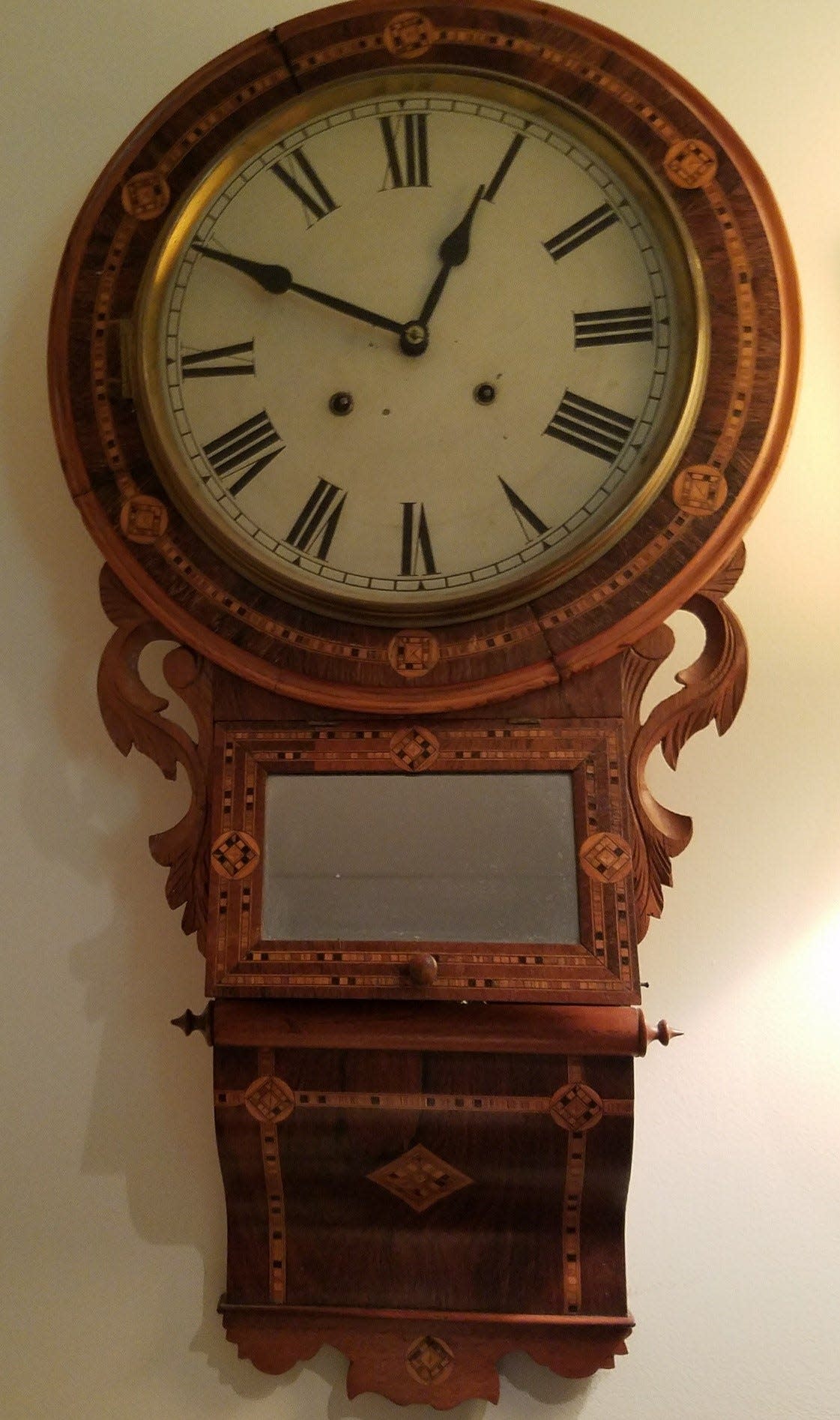Art & Antiques by Dr. Lori: Tick, Tock...Antique Clock Tips

I have appraised all types of clocks – tall case clocks, carriage clocks, mantle clocks, etc., for clients in all parts of the world. These clock collectors have been surprised or even stunned when an otherwise reliable clock just stops working – possibly for no good reason.
There is a very good reason why a clock suddenly stops working. Moving a clock is the single most common reason why a clock fails to keep time.
Clocks are homebodies. Once you move a clock to a new part of your home, the clock may stop working. Clocks of all types find comfort in a certain spot. Clocks react to the temperature and humidity.
Moving a clock to a different location may change the clock’s accuracy; some clocks may stop working altogether. Once you find a place in your home where a clock is working well, don’t move it.

Dr. Lori’s Clock Tips
There are some simple ways to keep your clocks working well.
Do you want a clock to keep accurate time? Wind it on a regular schedule, just like clockwork as the old saying goes. Pick a day of the week and time of day to wind your clock and stay on that schedule. It’s like “clockwork!”
Be sure to keep a clock fully wound. Don’t be overzealous when winding. If a clock will not easily wind with the key or the hands of a clock do not move, don’t force them. Consult an expert.
Place your mantle or carriage clock on a level surface. A clock’s pendulum will not swing properly on a surface that is not level.
Do not place a clock near a window, drafty area of a room, or near access doors. Clocks don’t like to be close to air conditioning units, HVAC returns or vents, radiators, attic, or garage access doors.
Remember the old rhyme: Clockwise for time, Counterclockwise for chime. In short, the rhyme means that you should move the hands of a clock clockwise to set the time and move the hands of a clock counterclockwise to set the chime. This will help your clock run properly.
If you intend to move or relocate your clock, it is wise to remove the pendulum first. Protect the pendulum out of harm’s way while you move the clock.
The pendulum’s length is an indicator of how the clock will run. The longer the pendulum, the slower the clock will run. The shorter the pendulum, the faster the clock will run. Some clocks have an adjustment with F (fast) and S (slow) marked on the interior clock works. You can adjust your clock. This simple adjustment of the F/S lever can help when a clock runs too slow or too fast.
Also, if you have a key to your clock, don’t give it up to anyone. It is a vital piece of equipment for your clock which is necessary to keep your clock working. Like your car keys, it will be a big headache if you lose your clock key.
Listen to the beat. If your clock misses a beat, that may indicate that your clock is on an uneven surface. Clocks that use pendulums or atmospheric-driven clocks, known as atmos clocks, need to be on a level surface to run properly. If your floors are warped or your mantle is crooked, your clock may not run properly. Mantles, bookcases, tables, or other flat surfaces must be level for most clocks to keep accurate time.
Remember, moving a clock may damage the clock. If you intend to synchronize or move a clock, be it a wall clock or a tall case clock, it is wise to consult with a clock professional first. Clocks featuring chimes and gongs may require special expertise.
Dr. Lori Verderame is an award-winning media personality and Ph.D. Antiques Appraiser. Dr. Lori appears on Netflix’s King of Collectibles and History channel’s Pawn Stars do America and The Curse of Oak Island. Her stage show, Dr. Lori’s Antiques Appraisal Comedy Tour, is presented nationwide to live audiences. Visit www.DrLoriV.com or watch videos on her popular www.YouTube.com/drloriv channel for treasure hunting, vintage shopping, and appraisal tips.
This article originally appeared on Beaver County Times: Art & Antiques by Dr. Lori: Tick, Tock...Antique Clock Tips
